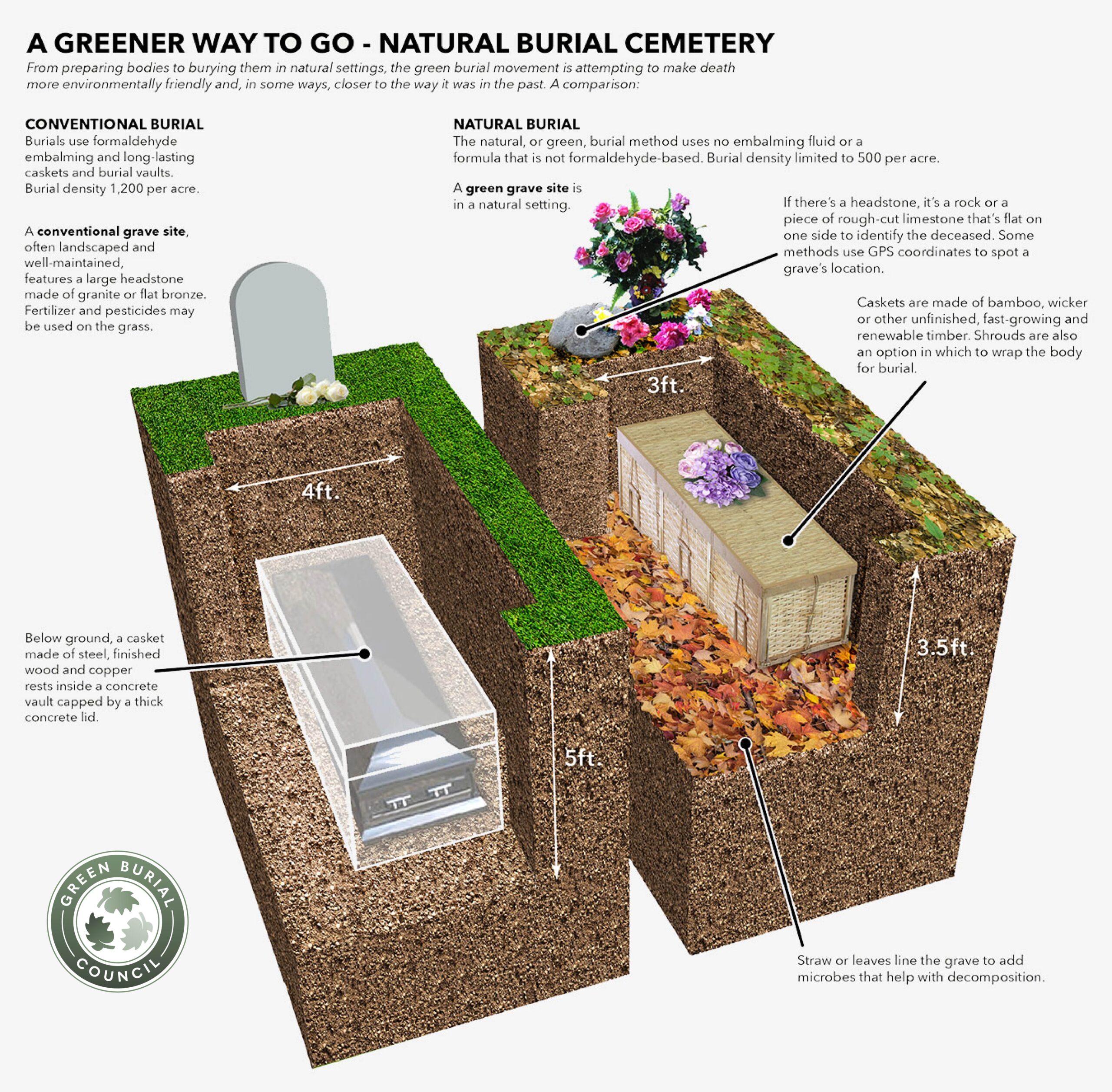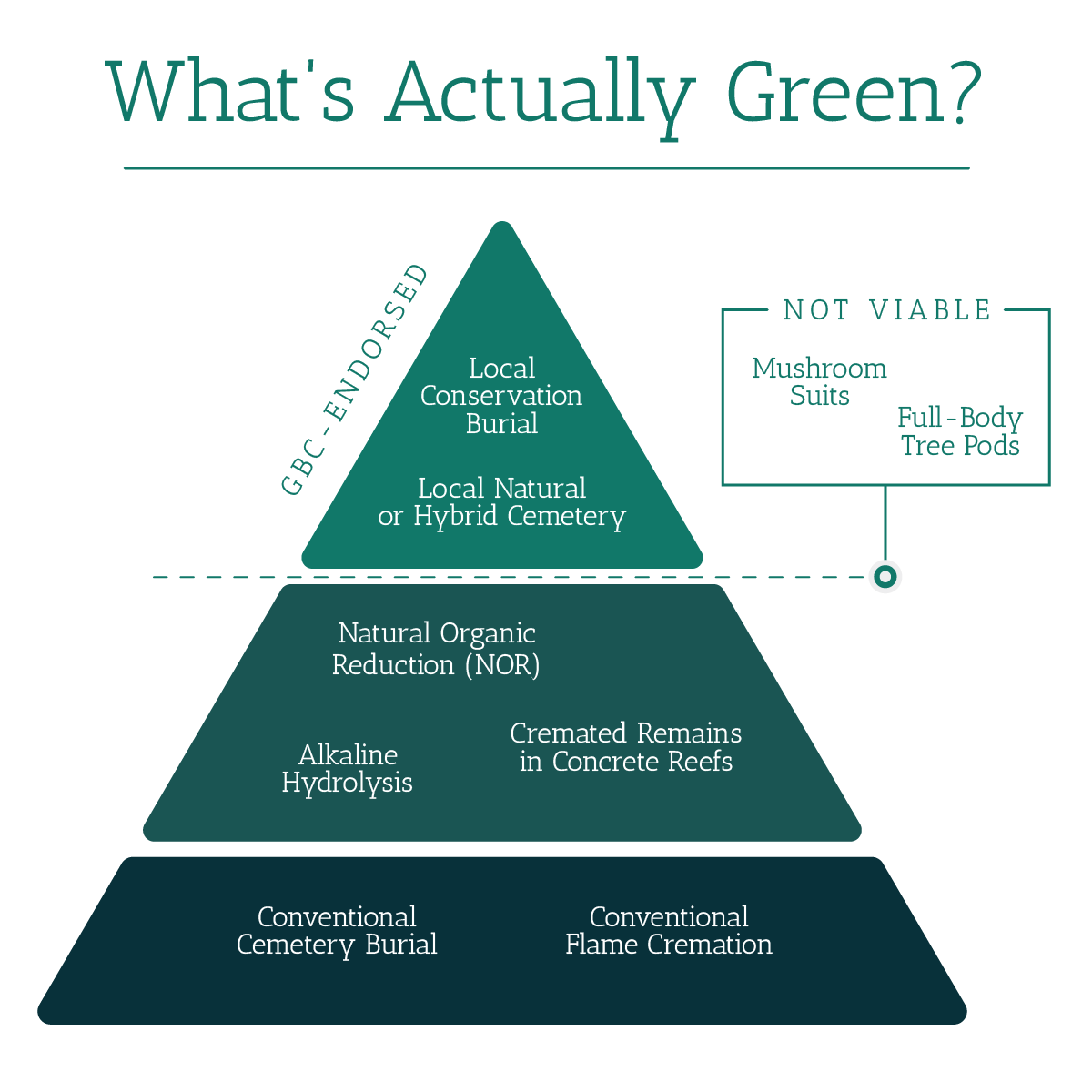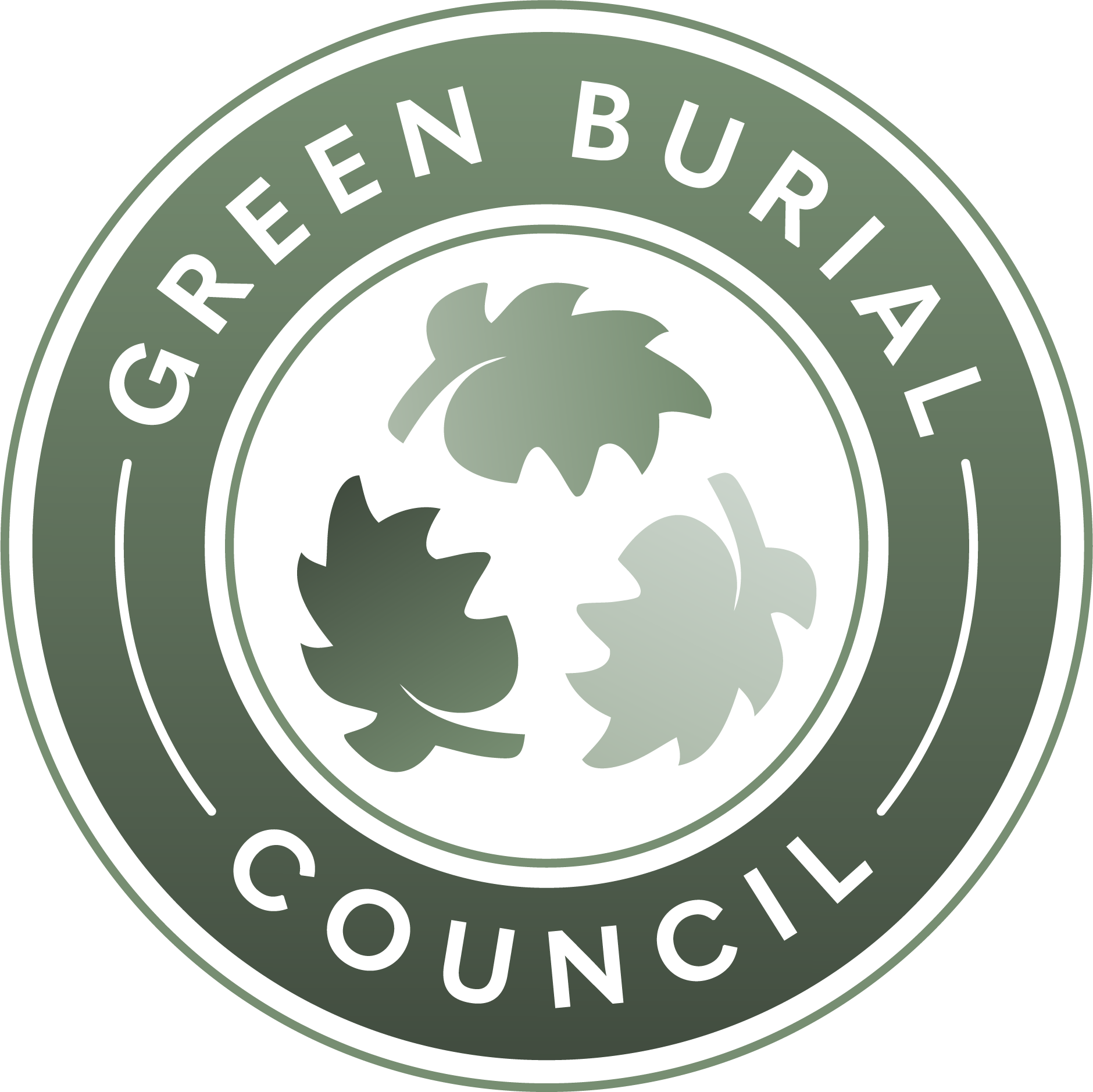What is Green Burial?
What is Green Burial?
Today, a conventional burial includes an embalmed body, a casket made of metal or hardwood, and a concrete vault deep in the ground. For many, this is what they picture when they think of a funeral. For those who envision a different type of return to the Earth: there is green burial.
Green burial is a more natural, environmentally-conscious approach to death care. It prioritizes placing the body directly in the Earth, forgoing embalming, and using biodegradable materials.
Green burial is not a new method. It is a return to how humans have buried their dead for generations, and how many cultures bury their dead today. It is a time-honored tradition that provides a modern solution for those seeking a simpler, Earth-friendly end.
“Humans are a part of nature not apart from nature.” -Marc Bekoff

Adapted from Nathan Butler's 'A Greener Way to Go'
What is “Burial”?
When we say something is a “burial," we mean the whole body is placed in the ground covered in soil. In other words, unaltered human remains are allowed to return to the Earth with no interference of the natural decomposition process. This means no toxic embalming, no vaults, no reduction of remains (see “Green Burial Alternatives” below), and the use of only sustainable and biodegradable containers (e.g. caskets and shrouds that are not harmful for the Earth).
What is “Green”?
What makes a “green burial” actually green? When we say “green,” we mean the burial benefits the environment and its inhabitants through:
- a low carbon footprint (carbon sequestration)
- conservation initiatives (land use and management)
- protecting worker health (forgoing embalming)
“Green” can be used interchangeably with other words like “natural” or “eco-friendly,” but no matter what it’s called, it has to be supported in its environmental claims.
Body, Containers, & Land
Let’s break green burial down further by reviewing: how we care for the body, what it’s placed in, and where it’s buried. Practices vary, and so do state laws, so be sure to check local regulations or consult an expert in your area if need
Green Burial Alternatives
Are cremation, aquamation, and human composting green?
The funeral industry, once thought of as slow to change, is now a market characterized by innovation and personalization. Alternatives to conventional and green burial are being developed every day. These new ideas help the public reimagine how we honor our deceased and participate in their burial and we are excited to see what the future of this industry holds. However, the Green Burial Council certification standards only apply to full-body burial of human remains at a cemetery. We do not set standards for “reduction options” like flame cremation, aquamation, and human composting. These reduction processes are engineered to mimic or speed up the processes that occur naturally after death with non-renewable resources and some negative environmental impacts .

Learn More
For a deeper understanding of green burial, more on green burial alternatives, and a look into Frequently Asked Questions, go to our FAQ page. Or watch videos created by GBC leaders on our YouTube channel:
